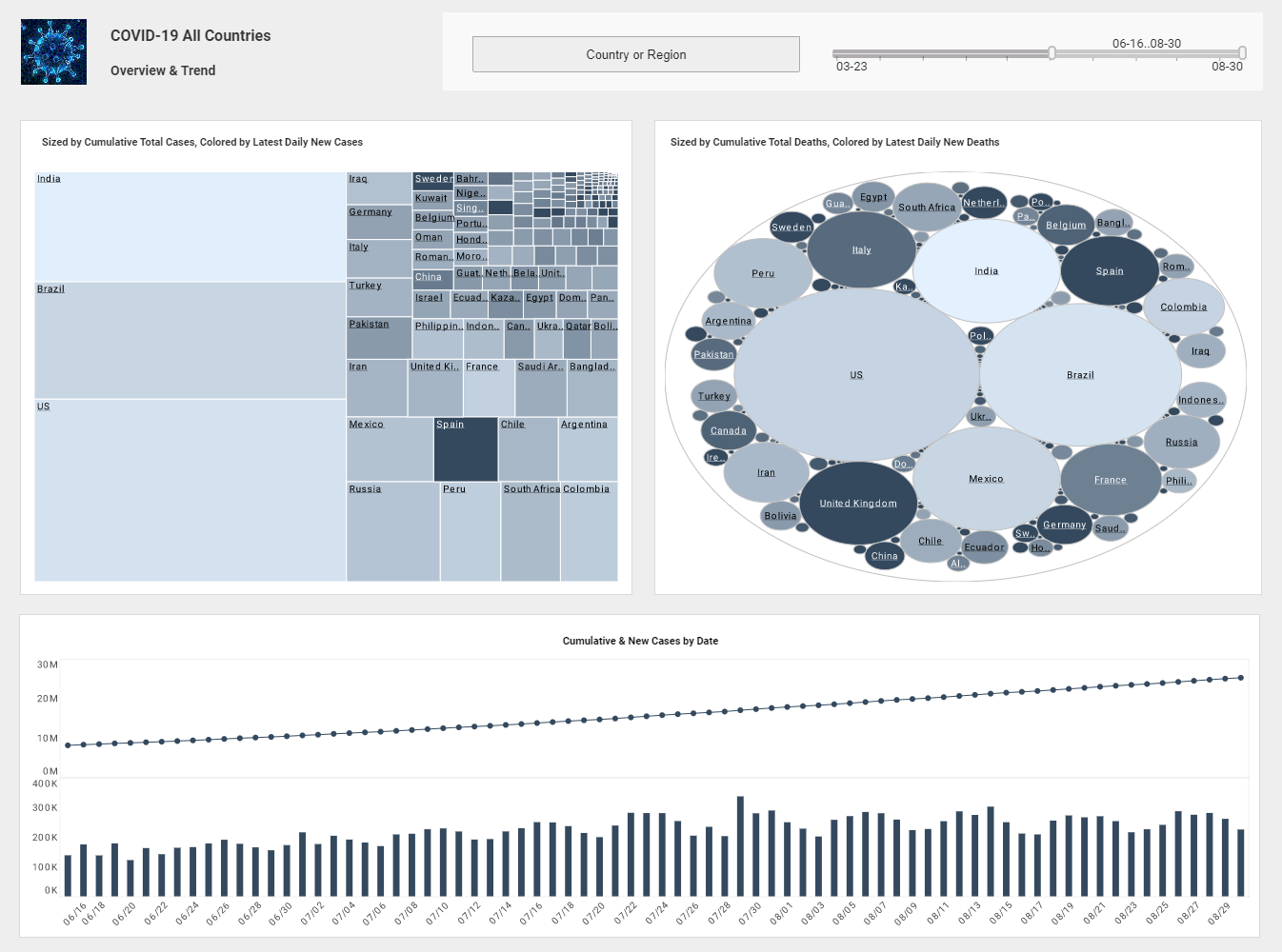InetSoft Webinar: Taking the Pragmatic Approach to Big Data Analytics
This is the transcript of a webinar hosted by InetSoft on the topic of "Taking the Pragmatic Approach to Big Data Analytics." The speaker is Jessica Little, Marketing Manager at InetSoft.
This webinar is inspired by a series of reports a research group put out. The most recent was called “Analytics: The Real-World Use of Big Data.” A couple of years ago, they published a study called Analytics: The New Path to Value. And in that study they took a high level look at the market and where organizations were placed along that maturity sophistication curve.
They followed that up with a study called Analytics: The Widening Divide, and in that study they took a look at those sophistication levels and where organizations were focusing and took it a level down into the organizations themselves and how they were organizing themselves and executing an analytics within their organization.
This year came Analytics: The Real-World Use of Big Data. So that’s a subset of the overall analytics market focused on the Big Data topic. Some of the questions, not all of them, but some of them, carry through from year to year. But they really try to touch on what’s most timely for executives in the business market place around the globe to focus on.
This study was based on a survey of over eleven hundred professionals at various levels from 95 countries and 26 industries. It really gives a global snapshot. Analytics is one of those topics that applies to organizations no matter what country you’re in and no matter what industry you’re in. So the report provides that comprehensive view of the analytics market and then guides you down into certain industries and to look more deeply.
| #1 Ranking: Read how InetSoft was rated #1 for user adoption in G2's user survey-based index | Read More |
The first question is Big Data new to the organizations? Or is it really just a new term that many of them have been doing already for years?
Big Data, in and of itself, isn’t a new topic in some organizations. I think what’s very new about Big Data is that it is now a topic for all organizations to be thinking about. And what has happened in the market place in the last few years is it’s a digitalization of everything essentially.
So if you think about the amount of data that you’re producing yourself that’s now available within organizations, and I don’t just in social data I mean, you know, many more of our operations and our processes are now much more digital. They’re all online. We’ve got centers that are coming in.
There are a number of industries and mostly very large organizations who have been dealing with very large data sets for a number of years. Think of all of the data that comes out of oil and gas exploration, or the traffic on telephone networks from being able to just log those calls.
For some industries and some companies, they have been dealing with Big Data for a number of years, but the first differentiation now is that more organizations are seeing Big Data available to them. There is much more data in volume, velocity and variety available to them.
And the second thing that happened in the market place is a change in the underlying technology. So in the past, organizations were very constrained by their ability to process these large data sets. One reason was because it consumed an enormous amount of computer processing time. You might recall the term batch processing. People would run these batches of data sets over the weekend or at night.
Read what InetSoft customers and partners have said about their selection of Style Scope for their solution for dashboard reporting. |
And so there was always this 24-hour, or 7-day, or it could be as much as a month lag for having that data available. Well, the thing that changes the market is that the computing powers continue to get better. At the same time the cost of that computing power has come down, and the cost of storage has dome down.
So many more organizations are now able to store this data. They have dedicated processors for analytics that can work through the data, and the analytics tools themselves have matured to where many of them offer capabilities, deep statistical capabilities to users like you and me who really aren’t ones that have our PhDs in mathematics.



